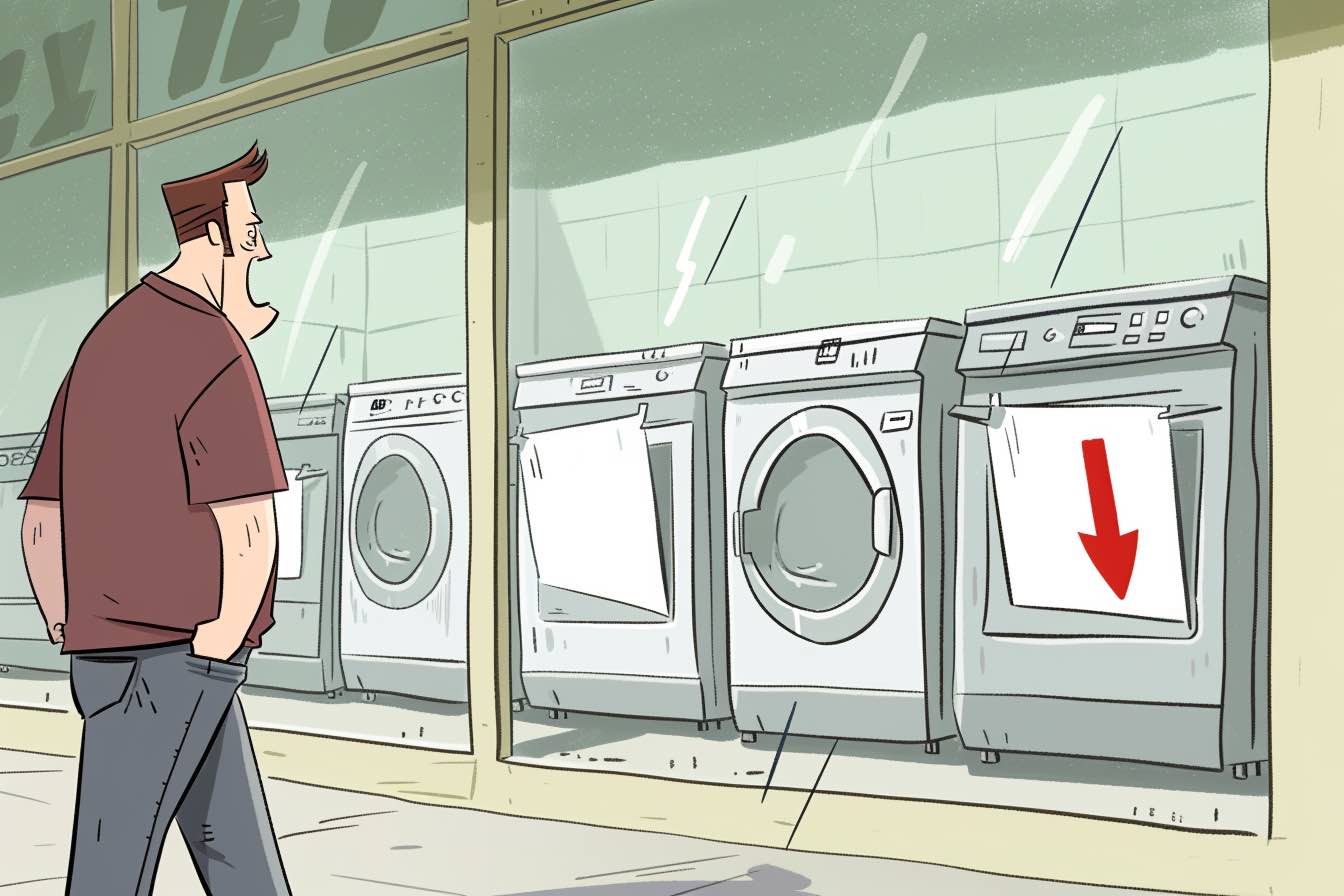Don’t look now, but chances are your mattress is covered by a ridiculously long warranty. Or so you might think. But Vijay Khasat recently found out what Sealy meant by “20 years” when he tried to get the company to replace what he claims is a defective mattress.
It turns out 20 years is not 20 years, at least in the traditional, dictionary-definition sense. His odyssey to replace a bad mattress is a reminder for all of us to read the fine print on your warranty. (The mattress police won’t save you, but maybe my advocacy team can help.)
“My wife was waking up with a backache”
Khasat says his mattress had problems the moment he purchased it in 2001 in Canton, Ohio. I know, that’s 18 years ago, but remember his mattress had a 20-year warranty. Or at least, that’s what he thought.
“The problem involving undue sagging, which started a few years after we purchased the mattress,” says Khasat. “We just kept on postponing contact with the dealer. But a few years ago, it became really bad – so bad that my wife was waking up with a backache.”
Khasat found the warranty for his mattress, which clearly indicated a “20-year Premium Warranty.”
He contacted the Canton dealership where he purchased the mattress. A representative there said Sealy in Canton would replace the mattress “for free.”
Problem solved? Unfortunately, no.
Khasat now lived in Hayward, Calif., 2,512 miles from Canton. That’s a 36-hour trip — way too much to deliver a defective mattress.
And that’s when his troubles started.
Surprise! Here’s how we define 20 years at Sealy
Sealy said the codes on his mattress indicated his warranty was only valid until 2011.
So 20 years is just 10 years in Sealy-land.
“This is the epitome of unadulterated deception,” says Khasat. “The dealer provides a written premium warranty of 20 years. However, the manufacturer tells you the warranty is only 10 years. This is a conspiracy of the first kind designed effectively to deceive the trusting consumer, and thus allowing dealers to sell cheap ineffective products.”
The discrepancy between the dealer’s warranty and the manufacturer’s warranty is what caused the Elliott Advocacy team to get involved. Our advocate Dwayne Coward asked for the paper trail on Khasat’s defective mattress case, which showed him trying — and failing — to escalate the case to Sealy corporate.
By the way, Sealy never really explained why it only showed a 10-year warranty on the mattress. Not to him, not to us.
Why is Sealy refusing to replace this defective mattress?
Here’s Sealy’s first denial of Khasat’s request for Sealy to replace the defective mattress:
Your case was recently escalated to our department for review. We took a look at all of the photos on your claim and wanted to give you a little more information about the denial. Your mattress has an innerspring system, although it does contain foam for comfort. For our innerspring mattresses, we use the 1.5″ standard for impressions when reviewing warranty claims, because this mattress does have coil technology.
The impressions shown in the photos provided being less than 1.5″ means these impressions are a normal occurrence in your sleep set, and indicate that the upholstery layers are performing as they were designed to do by conforming to your body’s individual contours. Today’s mattress industry produces products filled with cotton, foam, and other fillers, which will settle over time. Mild impressions, or indentations are normal, and are not an indication of a structural failure, or a manufacturing defect.
While we are unable to offer a warranty replacement at this time, please understand your warranty is still in effect for the limited term per your original warranty for a manufacturer defect, and this matter can be revisited in six months, if the issue persists.
DENIAL REASON: normal indentations or sagging (not associated with sag in foundation) of less than 1½” for Latex or Innerspring mattresses, or less than 3/4″ for Memory Foam mattresses, IS NOT COVERED. If it is determined that an indentation is caused by misuse, abuse or factors other than a product defect, this warranty will not cover that condition.
What does the warranty say about a defective mattress?
Let’s have a look at that warranty before we continue. Here are Sealy’s warranties for a mattress purchase in 2001.
Here’s the relevant language:
Torn handles, stitches pulled out of the handle where it’s sewn to the mattress, and tears in the mattress fabric where the handles are attached.
Coils or wires that are loose, broken, ripped or protrude through the fabric.
Body indentations of an inch and a half (1.5″ inches). Click here to find out how to accurately measure an indention.
Unnatural sagging: Your warranty covers mattresses that are continuously supported by a matching box spring, or equivalent, with an appropriate frame. The frame has to include a rigid center support with at least five legs, or a rigid center support with at least five hardwood cross slats for queen and king sets. [Emphasis mine.]
That prompted this rebuttal from Khasat:
- During sag measurement by your representative, Edward, on May 25, 2019, I witnessed the sag to be more that 1.75 inches, not less than an inch as reported.
- Your rejection criteria does not hold water. Average weight of an American man is 197.9 Lbs. Whereas, I weigh less than 112 pounds (medical records can be furnished upon request). Based on the laws of physics, the sag is directly proportional to the weight applied. Thus, sag limit should in this case should be adjusted accordingly, i.e. should be reduced by 112/197.9 = 56.59%. This is simple logic. I will present this fact to the judge in the Small Claims Court of Alameda County.
- I hope that Sealy considers this matter with honesty and integrity and replace our defective mattress. Otherwise, please provide us with the Sealy’s Agent in California as requested above.
Sealy won’t replace this defective mattress
And here’s the final rejection:
Your warranty claim request has been reviewed. Unfortunately, we must decline the request as the documentation and/or pictures provided do not allow us to determine that the claim falls within the guidelines of warranty coverage. The underlined bullet below explains the reason for the denial of your claim.
As stated in your warranty certificate, Sealy reserves the right to deny a warranty request for the following reasons:
Comfort preference
Mattress is outside of warranty period
Physical abuse or damage to the structure and/or cover material, including but not limited to, burns, cuts, tears, liquid damage, or stains. However if there is a warranty defect not caused by the abuse or damage then the mattress would be covered under the standard warranty.
Damage associated with an improper bed frame, foundation, or adjustable base. See attached for description and illustrations of a proper bed frame.
Replacement of the accompanying piece in the Sealy sleep system where only one piece is defective, unless that accompanying piece is also defective.
Still more reasons for this rejection
Floor models or demonstration samples (“demos”) sold at a discount (See separate warranty for demos and floor models if coverage is provided by retailer).
Product sold by resellers who are not authorized retailers.
Product sold “as-is”, “preconditioned”, “reconditioned”, “used”, “comfort return”, “returned”, “previously owned”, or any other similar wording indicating that the product is not “new” or of “first quality”, or has previously been purchased or used by another consumer.
Also, normal indentations or sagging (not associated with sag in foundation) of less than 1½” for Latex or Innerspring mattresses, or less than 3/4″ for Memory Foam mattresses, IS NOT COVERED. If it is determined that an indentation is caused by misuse, abuse or factors other than a product defect, this warranty will not cover that condition.
If you feel a manufacturing defect has developed at a later date, please call us to initiate a new warranty request at that time.
Wow, that’s a lot of reasons.
Elliott Advocacy asks Sealy for an explanation
Warranty information should be clear, unambiguous and uniform across the company, whether you’re dealing with a franchise location, a corporate-owned store or directly with the company. What’s more, the company shouldn’t throw a lot of denial reasons at the ceiling to see what sticks. If you ask a customer to send photographic evidence of a mattress defect, you need to do the same. You can’t just say that the warranty is void. You need to prove it.
Dwayne contacted Sealy on Khasat’s behalf to get some clarification. Khasat had complicated the case by threatening to go legal, but he hadn’t done it yet. Fortunately, Dwayne caught this before Sealy referred this case to its legal department.
A representative promised to review Khasat’s case and to contact the customer with a resolution.
And that’s exactly what happened. Sealy reached out to Khasat with a proposed fix. (Here’s how to resolve your own consumer problem.)
“They said they will replace the mattress for a nominal charge,” he reported. “Today, they told me the nominal charge is about $2,150. This is laughable.”
Sealy decides to replace the defective mattress — at a cost
Dwayne agreed that the resolution was less than ideal. So he circled back with Khasat. Sealy re-reviewed the request for the replacement of the defective mattress and agreed to send him a new one for $1,000.
Now, why anyone would want a new mattress when the company refused to stand by an old one is beyond my comprehension. But Khasat was happier with this deal, and he took it. (Related: I want to return this old mattress for a full refund!)
For the rest of us, the lessons are clear:
- Get your warranty in writing and make sure you keep it somewhere safe. Two decades is a long time — and your mattress company might be using a different calendar. (Like airline math.)
- Read your warranty. Know what it covers and what you have to do to file a claim, if necessary.
- Remember the layers of appeal when you’re dealing with a mattress company. The dealership and the corporate location may be singing from a different hymnal, as they say.
Your final level of appeal is your state attorney general or a consumer advocate. But that’s a long shot. (Credit card disputes after 18 years are highly unlikely to work.) - Reality check: Mattresses wear out with age. The industry-funded Better Sleep Council recommends replacing your mattress every seven years. While that may be self-serving advice from the mattress manufacturers, the truth is, Khasat was near the end of his mattress life cycle anyway. Maybe he should have purchased a new mattress from a company with a less restrictive warranty.




